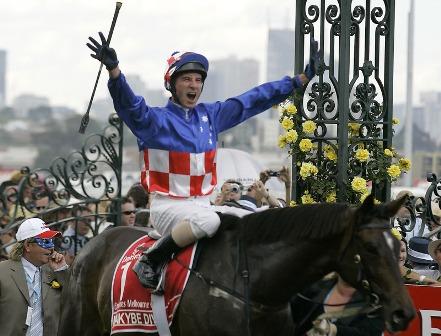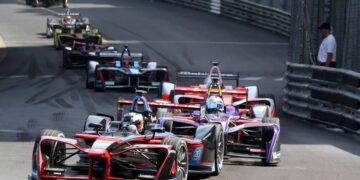
When I was eight, my parents announced that we were leaving the city and moving to a farm in the country. I assumed, as any eight year old girl would, that this meant I was getting a pony and was quite dismayed to discover this was not on the cards. I attempted to fill the pony-shaped void in my life with a steady stream of horsey books; The Saddle Club series, Black Beauty, The Black Stallion and Jill’s Gymkhana. Very occasionally the Sunday afternoon movie was horse related, and it was from National Velvet that I learnt of the Grand National horse race that I would experience some two decades later.
During my years in Australia, I had an annual dose of horse racing on the first Tuesday in November courtesy of ‘the race that stops the nation’, the Melbourne Cup. Every year from early primary school I was part of a sweep, and had crowded around a TV at ten to three Melbourne time clutching a newspaper slip showing my horse’s name and the jockey’s colours. Obviously the techniques and stakes changed over the years, at school we picked our horses out of a hat then trooped to the AV room to watch the race and discover who had won a Freddo frog. University years involved finding the nearest TAB and negotiating the hot smoky room crammed with derelict and desperate looking men to place a small bet, then talking over the pre-race coverage trying to work out what the odds meant. At various workplaces, the sweeps involved real money (albeit token amounts), arranging for someone to bring in a TV, and a team effort to arrange the rabbit ears so the horses didn’t appear to be running through a blizzard.
I had hoped that during my years in London the Grand National might replace the Melbourne Cup as my annual horse racing event, but this was not to be. The Grand National is run on a Saturday in April, not during the working week, and did not inspire any workplace celebrations. If I was to participate I’d need to remember my uni days and do it myself.
I tracked down a Grand National sweepstakes kit online and scanned the jockey’s colours for my lucky symbol, the Maltese cross, without success. I read over the horses names but none jumped out at me. I then noticed that one of the jockeys shared my name — I had found my horse.
Now to place a bet. Luckily a friend was making a trip to Ladbrokes and placed my bet for me. The race is run at a quarter past four and I happened to be visiting a friend who had the TV on, so glanced at the pre-race coverage whilst we chatted. I noticed that my horse was one of the few grey horses in the field which should make it easy to spot. A quarter past four approached but the horses continued to pace about.
“Did you want to watch the race?” my friend asked.
“Yeah sure, but it won’t start for a while, they aren’t even in the starting boxes yet.”
“You know the Grand National doesn’t have starting boxes,” mentioned my friend and we hurried inside just in time to see the horses spring into action.
The Grand National differs from the Melbourne Cup in that it involves sixteen fences that the horses must jump. We watched with a mix of excitement and horror as foliage flew, horses fell and jockeys tumbled to the ground in the path of the thundering hooves of the horses behind them. I later read that the jockeys escaped serious injury but two horses had to be put down. My jockey managed to remain seated but I watched as my grey horse slipped further and further down the pack, finishing last. It was comforting to discover that as with Melbourne Cups gone by, the Grand National left me a little poorer in the pocket, and with that my annual horse racing experience was complete.








 Explore top-rated compensation lawyers in Brisbane! Offering expert legal help for your claim. Your victory is our priority!
Explore top-rated compensation lawyers in Brisbane! Offering expert legal help for your claim. Your victory is our priority! 

 "
"


